How Companies Can Adapt Better to Remote Work
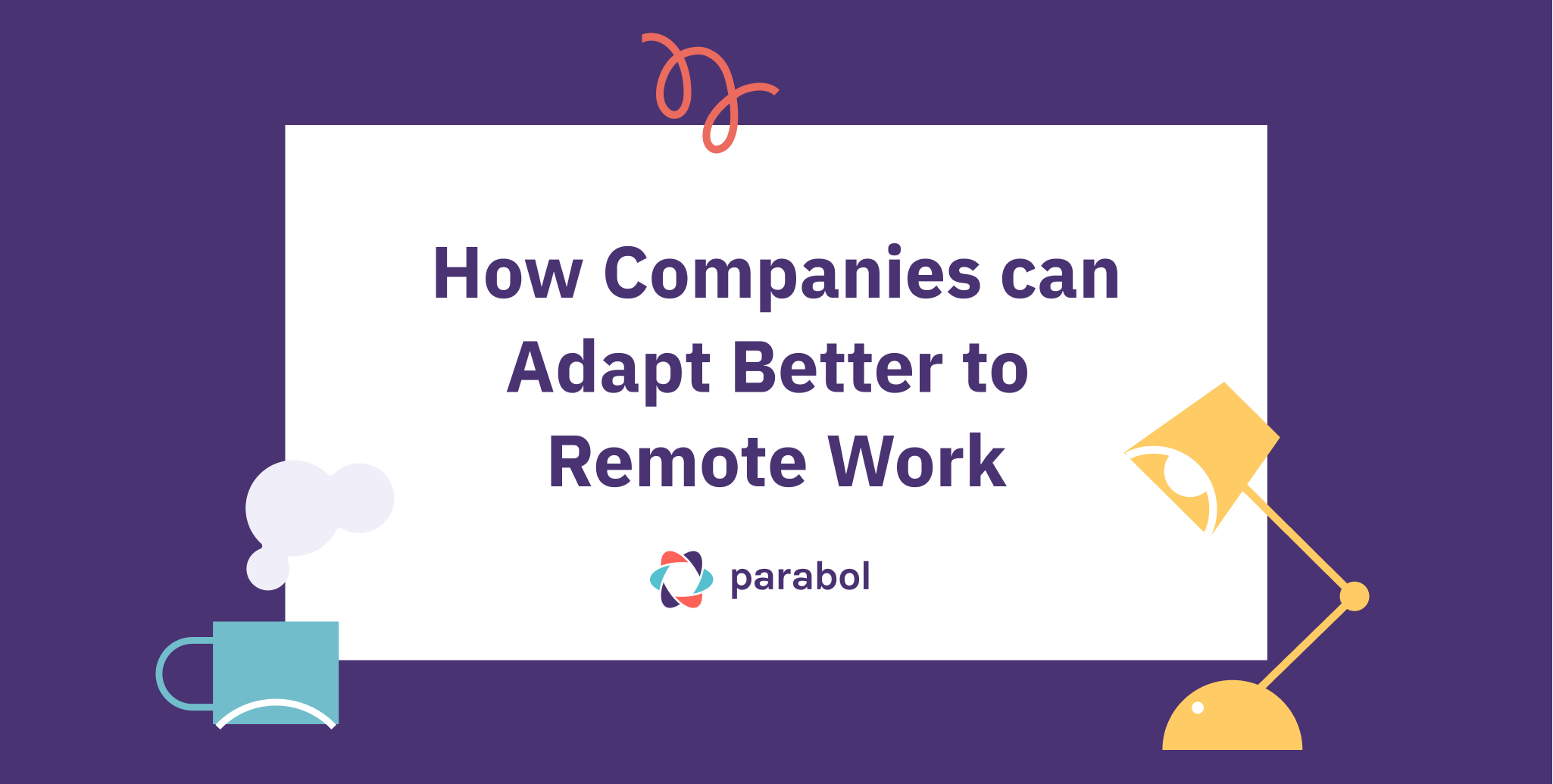
Do you remember your last trip for work? I do. It started with an outrageously early flight on January 16th.
As the first rays of dim winter sunlight illuminated the dust on the departure lounge TV, I caught snippets of a news report about a virus that had been rampaging across China and had now ventured abroad.
“Well, that’s not good”, I thought. And no, it was not good – that much was clear.
But what was not clear was just how profound and long-lasting the impact on our lives would be, and how we would be forced through various stages of adaptation on the path to a new way of working.
In this article, we’re taking a look at how humans and organisations can transition better from structured in-person work environments to a remote or hybrid future, focusing on communication, onboarding, and culture-forming.
Contents
Remote by Necessity or by Design?
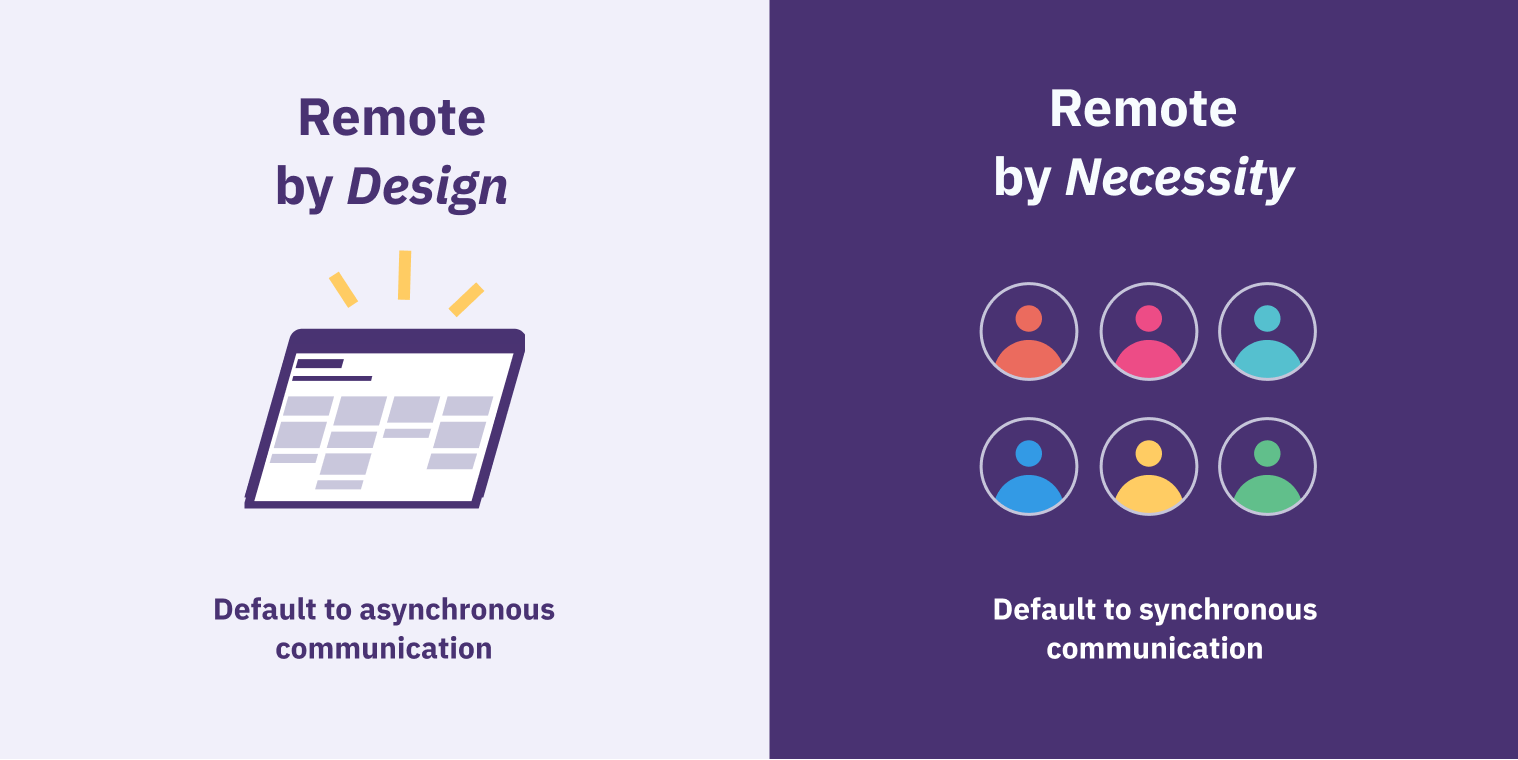
When I was first told to work from home sometime in mid-March 2020, an odd sense of camaraderie emerged.
There was a sense of wartime spirit as our teams banded together to think about how we were going to manage this situation – mixed in with a hefty dose of chaos and uncertainty.
We were all in it together, and we had to find a way to make it work.
Suddenly, employees around the world had permission to innovate, experiment, try new ways of doing things, use new tools, or form different connections that we wouldn’t have thought about making otherwise.
Remote work or collaboration tools, including Slack, Microsoft Teams, Zoom, Miro, Mural, and even our own tool – Parabol – came to the rescue as people sought ways to brainstorm, plan, meet, discuss, and create together in digital space.
But although all of us were forced into the pandemic together, some companies had a head start.
A handful of companies, including Automattic, TopTal, Github, Animalz, and Basecamp, as well as many startups, had worked remotely for years already. In fact, it’s how they were designed from day one. So it was logical to look to them for advice.
The weird kids on the block were the ones with solutions to problems. But for all their advice, it’s hard to change the way of doing things when your whole company is built on the assumption of face to face contact.
Many of us came to the realisation that building a house from scratch is easier than building on top of existing foundations.
Now the world of remote work can be roughly divided into two camps. The organisations that built the foundations and the house; and those who built co-located organisations and opted for a remote work loft conversion.
To keep it simple we can refer to these companies as Remote by Design and Remote by Necessity.
- Remote by Design – Companies that are remote by design have, for most of the time, been the anomaly. But as technology has advanced, many younger businesses have started off with this model. Remote-by-design companies have established ways of working that have formed over time and are optimized for remote work, including a focus on asynchronous communication, documentation, and remote team-building.
- Remote by Necessity – This bracket includes any company that has been forced into a remote work situation due to the pandemic. Companies falling into this category ranged from small businesses to huge corporations. But what all of them have in common is an office location where teams congregate and work in close proximity to each other. These types of companies tend to default to synchronous communication.
1. Accept that Remote Work is Here to Stay
Aside from the inevitable existential questions forced upon us by a global pandemic (is the human species doomed?, etc), the transition to remote work has prompted additional questions about the future of work.
One of the first to ask those existential questions (about the future of work, not the meaning of life) was Adam D’Angelo, CEO of Quora, who announced that his company would become remote first, forever in response to the pandemic and the shifting tides of work.
Explaining his thought process, Adam put forth a series of questions:
“What should we do when Covid-19 is over? Should we go back to the way things were, with most of the company working out of an office? Or would we be better off sticking with remote work?”
Quora is not the only company – nor was it the first – to make a permanent change in response to a temporary (we hope) pandemic.
Shopify, Twitter, Square, Zillow, UpWork, Coinbase, and Slack are just a few examples of companies that have opted for a remote-first model even when it’s safe to go back to the office.
Are the winds of change really blowing so strongly?
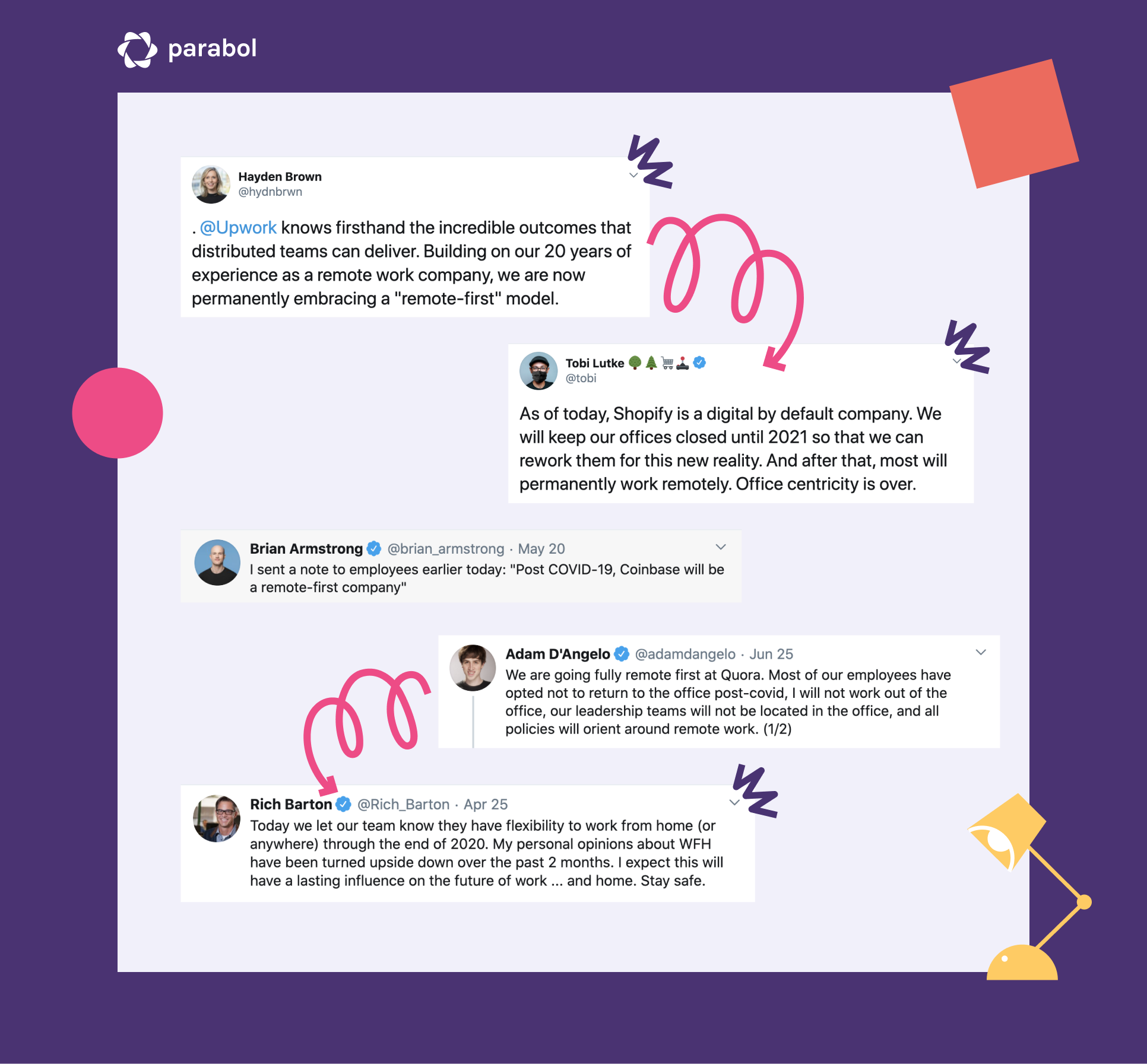
Apparently so. Because, short of announcing a permanent remote-work policy, numerous other companies have made actions that speak louder than words.
Pinterest, for example, cancelled its 490,000 sq. ft. lease on a planned project in downtown San Francisco, citing the shift to a work-from-home culture. And in case you thought it was only tech companies going remote, law-firm Slater and Gordon decided to give up their London office “for good”, citing positive remote working experiences.
Even in Japan, which is renowned for its hierarchical and structured office structures – including scheduled mandatory exercise for some workers – large companies like Fujitsu have decided to adopt a remote-first policy for 80,000 employees and reduce their office footprint by 50% up to 2022.
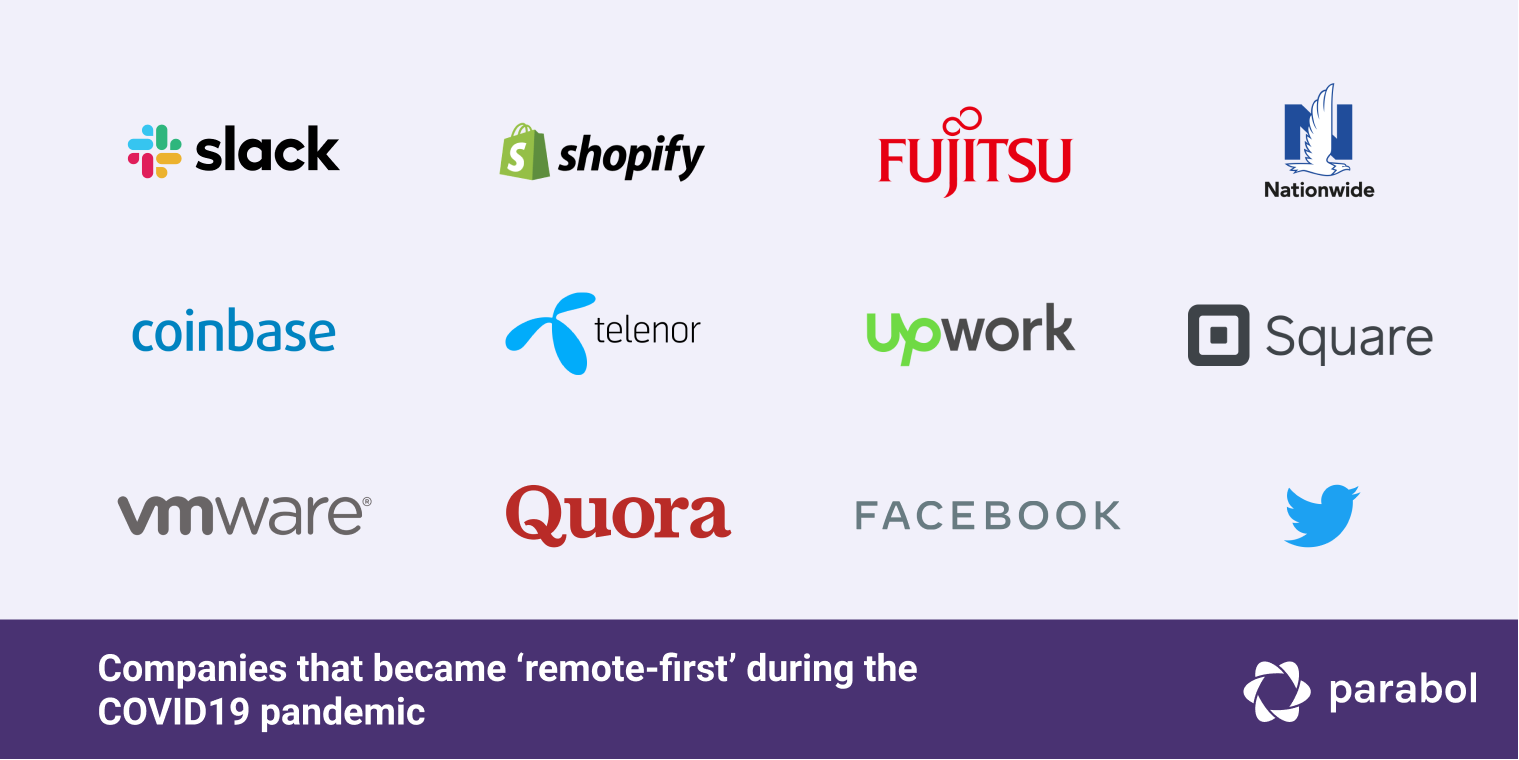
The response to remote work has broadly been to go with the tide and embrace more of it (with some notable exceptions)!
But the future of work won’t be only remote, it will probably be remote-first or hybrid, as more people demand the option of flexibility.
The new remote-friendly ways of work that we adopt during the pandemic won’t just go away when we get a vaccine.
They will inform how we integrate and work with our remote and hybrid colleagues far into the future.
2. Conquer Zoom-fatigue using Asynchronous Communication
The knee-jerk reaction of many newly-remote teams was to keep calm and carry on… moving the day-in-day-out office interactions onto Zoom, e-mail, and instant messaging services.
That was okay for a couple of weeks, until Zoom’s gallery of disembodied faces started to feel like a claustrophobic and inescapable nightmare.
Instead of reinventing the wheel and finding a new way of working together, many companies simply transposed their in-office way of working directly onto the internet.
After all, wasn’t the virus going to be stamped out in a matter of months?
- For managers, remote work meant hours upon hours of Zoom calls, constant IM distractions throughout the day, and perhaps some worries about staff slacking off.
- For employees, it meant… well, more Zoom, constant IM distractions, and occasionally having to manage their paranoid boss by proving they were being productive.
The feeling of exhaustion and low morale connected to this way of working was so universal that humanity coined a phrase for it: “Zoom-fatigue”.
The irony is that for many of us the tools meant to make remote work easier, made work feel much, much worse.
Why is that?
Cal Newport sums up this paradox nicely, saying:
“In some respects, we may be in an electric-dynamo moment for remote work. In theory, we have the technology we need to make remote work workable. And yet most companies that have tried to graft it onto their existing setups have found only mixed success.”
Perhaps what we’ve begun to hit upon, six months after we were forced into our homes, is that remote work doesn’t just mean working from home.
Remote work means adopting new ways of collaborating, discussing and making decisions that are appropriate given we are unable to collaborate in person.
Apple unwittingly demonstrated to us why.
In their short video titled ‘the whole working-from-home thing’, they showed us all the horrors of a poor work from home experience in their half-way satirical video of a team working towards an unrealistic deadline over video chat, with unhealthy (read: nonexistent) boundaries between work and home, and a toxic boss to boot.
It was funny because it was relatable in what was, for many people, an entirely new scenario. But it was also crushing and dark for the same reasons. It showed us how far many teams need to go to find a culture of remote work that is sustainable and human.
Companies that grew up remote were in a slightly better place when the pandemic hit.
After all, they had devised new methods of working together to ensure productivity and accountability.
While the world suffered Zoom fatigue, remote-by-design companies worked asynchronously, finding a less exhausting and more sustainable way of remote working and running meetings.
They did this by:
- Setting a regular and predictable schedule of meetings during the week.
- Having documented rules around meetings – for example, that they should take no longer than 45 mins, involve icebreakers to get everyone speaking, and be structured in a way that gives everyone an explicit time for them to speak.
- Defaulting to asynchronous communication – instead of calling a meeting, they record Loom videos, write up an artefact for the team to respond to in their own time, or ask a question on Slack/Teams that can be answered when the team have time.
- Using ad-hoc video calls as a last resort when only face-to-face conversation will do.
The companies that have adapted best to the pandemic appear to be those that have put limits on the number of hours they spend together in meetings.
Agile teams we have spoken to seem to have responded surprisingly well to remote work.
They put this down to having a routine of scheduled meetings that take up just a few hours a week.
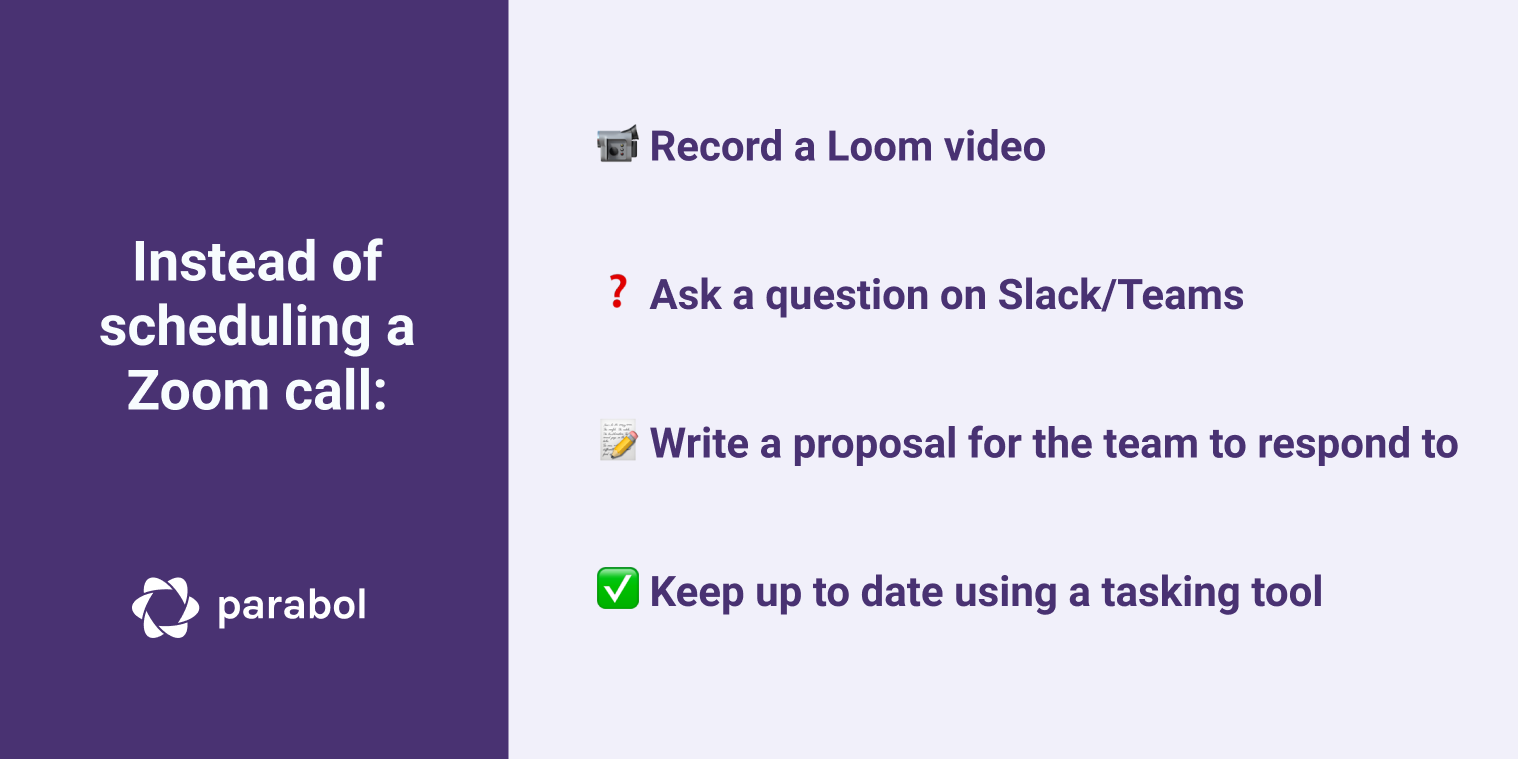
While daily standup meetings carve out a sliver of time that helps unblock team members, and tasking tools like Trello or Jira helps everyone have a shared understanding of where things are at, without discussing them on a call.
That means no all-day Zoom marathons
Teams that are remote-by-necessity or non-agile have often ended up in a purgatorial cycle of Zoom meetings, because when you’re used to doing everything in person, the natural urge is to continue speaking face to face via different means.
In many companies, project or task updates are carried out in a meeting or a call.
Teams can lower Zoom-fatigue and employee burnout by using a tasking tool can help managers stay up to date without mobbing or distracting their team members.
One person who wanted to remain anonymous told us about her bad experience transferring synchronous ways of working to remote work:
“I simply couldn’t focus on my work the way I wanted to because my manager was messaging me throughout the day. I started feeling unsatisfied about my own work, and doubting myself because I was trying to look at everything from his [the manager’s] perspective and was holding myself to an unrealistic level of productivity”.
This perspective adds some depth to research which shows that “remote employees have to do more than their in-house counterparts to get their achievements noticed.”
The extra work remote workers feel they need to put in to prove to their bosses they aren’t slacking off makes burnout a very real thing, while the need to stay in control leads managers to over-schedule meetings, leaving workers less time to get things done.
As we go into winter 2020, we’ve had months of experience with Zoom to know what works and what doesn’t. So for your own sanity, and that of your team, ask yourself: do we really need this meeting or is there another way to get what I need?
3. Be More Intentional about Onboarding and Inclusion
When Laura – a public affairs professional from Leicester – was due to start her new job, the pandemic had already hit the UK hard and the case number was rising rapidly every day.
The plan had been for her to turn up at the office on her first day as usual.
Instead, her team adapted the onboarding process by sending a laptop to her home address and getting her up to speed remotely.
“It’s been almost seven months and I’ve worked from home every day since, having still not met 90% of my team in person”
Despite not having met any of her team, she says:
“I feel like I have met them, because […] we have very regular Skype and Teams meetings between different teams, as well as one-to-ones between line managers and their staff. We also have the odd team quiz or “kitchen catch-up” meeting (scheduled time just for a social video call), which also helps”.
We may have been stuck at home during the pandemic.
But life goes on. People search for new jobs. Companies hire new folks.
That’s why Laura is certainly not alone in having onboarded remotely.
Thousands upon thousands of people will have undergone a new kind of onboarding process this year.
So much so, that Transferwise dubbed 2020 “the year of remote onboarding”.
Perhaps not the first thing that we’d associate 2020 with (wildfires, deadly viruses, police brutality, etc), but we’ll let them have it this time.
Transferwise exposed parts of their onboarding process by publishing stories of new hires.
They claim to have onboarded 243 new hires since March this year.
Angele, a new Product Manager at Transferwise spoke about what it was like:
“Starting remotely is hard. There’s no two ways about it.”
She added that:
“the team made a huge effort to communicate what they knew but also what they did not know about the state of the business and forecast. Providing information was fundamental when making some tough decisions and ensuring that everyone was aligned. We also had weekly Covid-19 related updates and a detailed information space.”
Humans are social creatures, and trying to build rapport remotely requires a lot more work and effort than doing so in-person.
When we’re all remote, the process of building that rapport simply must be more intentional.
And it doesn’t just extend to onboarding – it’s about maintaining an inclusive culture when it’s easier for people to feel left out of conversations or social interactions.
Being transparent and defaulting to over-sharing are behaviours that remote-by-design companies have learned to embrace, but can be unfamiliar to new hires who want to fit in and behave appropriately given the company’s culture.
New hires typically want to show that they are capable and prove that hiring managers made the right decision. Being remote, where everything is unusual and there isn’t a clear way to observe and absorb the culture can add a lot of stress to the onboarding process.
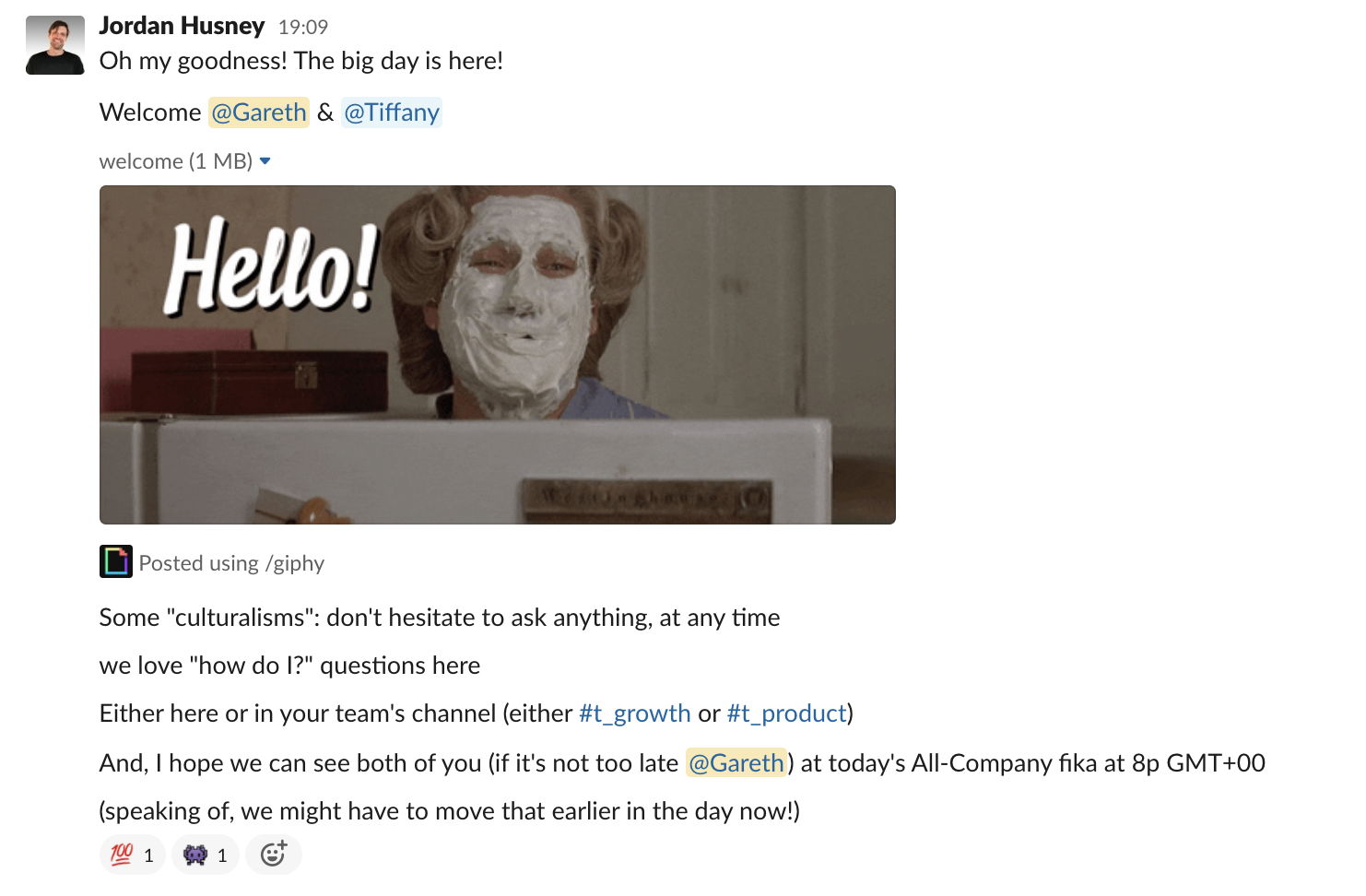 Priming new hires to understand what behaviours are encouraged helps reduce new hire anxiety.
Priming new hires to understand what behaviours are encouraged helps reduce new hire anxiety.Making people feel included might be the harder part of onboarding rather than getting up to speed with the job. It’s easy enough to get feedback about whether you’re performing your job well.
But it’s hard to bring up feelings of isolation or lack of inclusion.
Here are a few things newly-remote teams can do to improve the onboarding experience and build rapport with their team:
- ☕️ Take time out of work to socialise with each other. Perhaps it’s running a company quiz, perhaps it’s a laid-back coffee chat, perhaps it’s setting aside time to play games together. At Parabol, we hold a weekly ‘Fika’, which is a non-compulsory social call. Sometimes we play games, sometimes we just chat. It’s a good way of maintaining a connection across countries and timezones, and it seems that many companies have adopted similar practices.
- Onboard new team members into your culture as well as their jobs. Give a hint about how things work in your organisation to reduce feelings of anxiety and increase the quality of contributions.
- Use meetings to build rapport. Since meetings are one chance for everyone to meet face to face, use an icebreaker to encourage everyone to share a bit about themselves. Over time, icebreaker responses help you form a more rounded picture of your colleagues and discover unexpected commonalities!
- Run a retrospective on your onboarding process. Encourage your new recruit to run a retrospective with their line manager about how the onboarding process went so you can improve it in the future.
- Create a culture of positive reinforcement. If a new hire has done something well, let them know by intentionally reinforcing their behaviour with positive feedback. It helps new hires know they are on the right track and is even more important when working remotely.
- Default to over-communication. Keeping communication open and transparent in public Slack channels keeps everyone included in team discussions. It benefits everyone in an organisaton, but can help new hires internalise culture more quickly.
For more ideas about how to upgrade your remote work culture, check out our 17 tips all teams should adopt from remote work.
4. Reflect on your Experiences to Course-Correct
During the height of the lockdown, the New Yorker published a satirical cartoon in which the protagonist asks his partner “I can’t remember – do I work at home, or do I live at work”?
Like all the best satirical cartoons, it was funny because there was more than a grain of truth in it.
Separating work and home life is something many people have struggled with. For those with young kids, it has been especially difficult. Even if some folks have come up with ingenious and machiavellian methods of tricking their offspring.
As we settle in for the long haul, listen to your team about what has worked and what hasn’t in the first six months of this global work-from-home experiment. That includes all the messy ins and outs of working from home – be it noisy neighbours, construction work, or struggles with keeping a routine.
Aisha Goyal, a Sales Manager at Accenture decided to do just that!
She said that adapting to remote work was tough on her and her team, so she conducted a survey to “get an idea of what problems my team was facing”.
When the results were in she reported that:
“…most of them wanted better connectivity. Some were feeling loneliness after working for a long stretch from home, some faced issues while uploading big files, some felt that no one is keeping a check on them, […] and the worst was to maintain work-life balance. Most of them were facing problem to unplug into their normal routines”.
Taking a data-driven approach might be a simple way that all of us can get some signal about what’s working and what’s not. You have to diagnose the problem before you can find a solution.
Getting signal about what your team needs to do their job even better can give you an easy set of next steps to making the remote or hybrid experience better for everyone.
Running a regular retrospective meeting, even if you’re not an agile team can give you a helpful forum for discussing what’s working and what’s not working about remote work.
Using a simple template such as Glad, Sad, Mad, or Start, Stop, Continue, is all you need to have a productive conversation about how the remote work experience can be improved.
Conclusion
A recent Gartner study showed that 82% of company leaders will allow staff to work remotely at least some of the time following the pandemic.
Quite amazingly, the pandemic has de-risked the idea of working remotely for a whole generation. It’s no longer taboo to request a remote job.
In fact, it might be a key factor for companies trying to attract the best talent.
But if the pandemic has taught anything, it’s that formerly co-located organisations cannot simply replicate their regular way of work.
It leads to burnout, exhaustion and the much-dreaded zoom-fatigue.
As we go into winter, it should prompt conversations about how we can make work more human and sustainable for everyone.
All organisations have the power to improve remote work by:
- Using more asynchronous communication to prevent burnout
- Creating inclusive and social spaces for new and existing staff
- Reflecting on your remote work experience so you can make improvements
Being forced into remote work has caused a lot of turbulence, but it’s also offered an incredible opportunity to reinvent the way we work and experiment with new tools and rituals.
Some teams have alrady found unexpected benefits in remote work. One Scrum Master speaking to Parabol mentioned that now every member of his team is remote (instead of just a handful), retrospectives are far more inclusive because everyone is engaging in the same way:
“It gives everyone the same opportunity to participate equally”.
And while we often focus on the human and micro aspect of remote work, the trend could be huge.
Organisations as a whole are beginning to think about how culture and processes need to change to be more remote-friendly and some have also found benefits to remote work, not just in terms of saving heft real estate expenses, but in terms of hiring and diversity.
Saving time on commuting, having the opportunity to focus deeply on work without office distractions, and being able to spend more time with family, are all benefits that people have reaped from this global remote work experiment.
The skills we’ve learned now will certainly change the way we work for the next six months.
They might even change the way we work forever.









